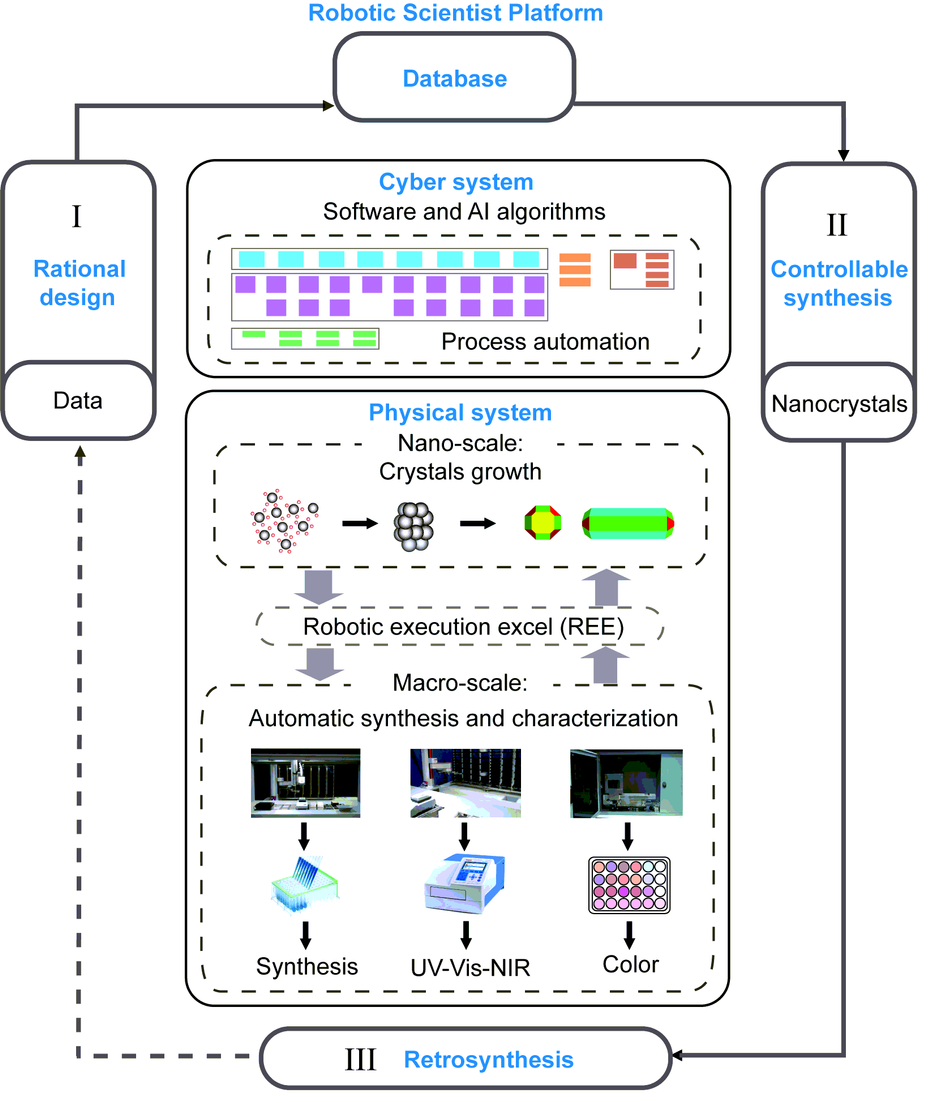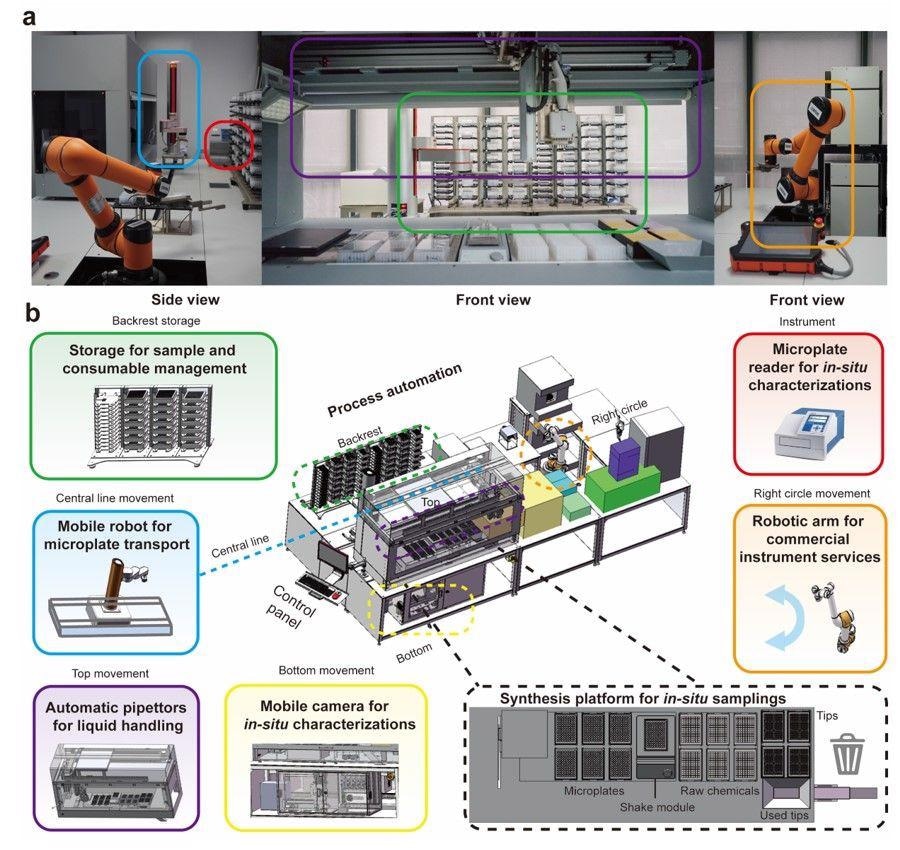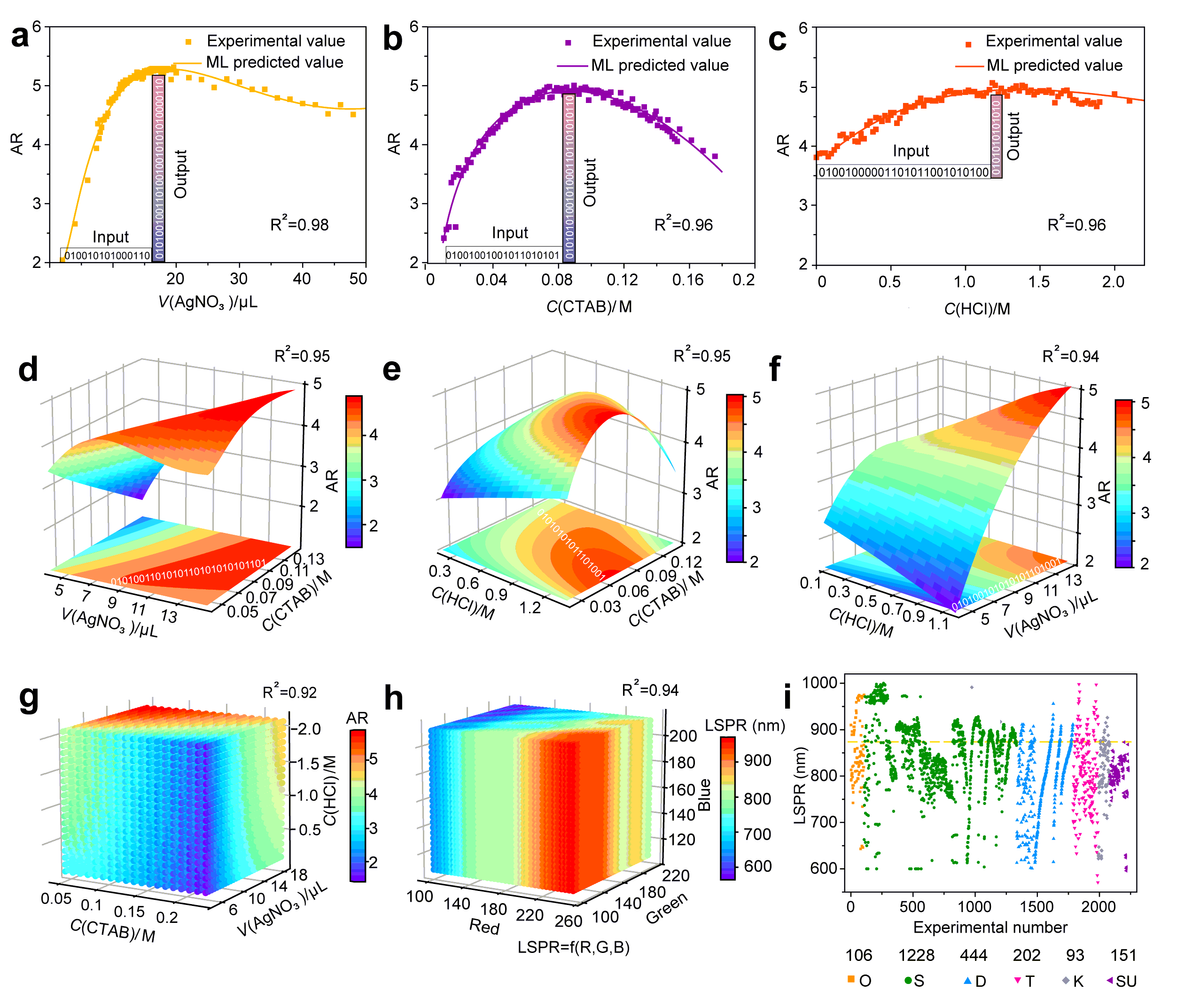Fabrication of materials using data-based techniques is being welcomed as a new strategy that will replace human scientists’ hit and miss tests and labor demanding jobs. In an article published to the chemRxiv* preprint server, a Robotic Scientist framework that may provide unparalleled capabilities for logical design, retrosynthesis, and programmable fabrication of nanoparticles is discussed.
The Robotic Scientist framework is taught to fabricate gold nanocrystals by using multidisciplinary domains such as artificial intelligence, automated robotics, and big data.
Data-Driven Fabrication of Materials
Data-guided development of materials is being hailed as a new paradigm for shifting laborious activities and trial-and-error tests away from human researchers and towards robotic scientists or chemical fabrication mechanized systems.
The sophisticated Human-AI-Robot cooperation system is expediting the multidisciplinary breakthrough in the fabrication of materials towards a Robotic Scientist for mechanized creation.
Convergence of chemical research, theoretical modeling, purpose-driven databases, configurable cyber networks, and mechanized physical systems is required in this growing discipline.
One of the potential objectives is digitized material generation, which involves gradually collecting information, efficiently revealing data links, and producing viable solutions over time based on prior iterations.

Figure 1. Robotic Scientist platform. Convergence of the database, cyber system, and physical system and process flow: I. Rational design, II. Controllable synthesis, and III. Retrosynthesis for closed-loop synthesis of nanocrystals based on the Robotic Scientist platform. © Zhao, H., Chen, W., et al. (2022)
Existing Work on Automated Fabrication Processes
Significant endeavors have been undertaken in the last decade to achieve digital production of substances.
On the macro-scale, layer-by-layer computerized additive production of 3D substances has been established. Artificial biology is a micro-scale milestone for the computerized fabrication of biomaterials using cells as the hardware on which genes are programmed
Lately, there has been considerable growth in biological programming languages and autonomous systems for chemical synthesis on a small scale. Simultaneously, a computerized chemist has been reported in order to find photocatalysts, opening the door to automated synthetic material research on the micro-scale.
Nonetheless, there are several limits to computerized fabrication, such as material searches lacking conceptual models, blind modification of substances without science-based methodology, and a lack of hardware-software integration to enable material innovations.
As an example, this study illustrates how the Robotic Scientist framework, which allows logical design, controlled fabrication, and retrosynthesis of nanocrystals, may address these challenges.

Figure 2. Illustration of the Robotic Scientist platform. a, Photograph. b, Schematic representation. The color frames in the photograph and schematic representation match each other. Backrest: Storage for the sample, microplates and pipette tips; Central line: Mobile robot for microplate transport; Top: Three automatic pipettors for liquid handling; Bottom: Mobile color-ultra-sensitive camera for in situ color characterization; Platform: Synthesis platform for in situ sampling; Instrument: Microplate reader for in situ UV-Vis-NIR absorption spectrophometry; Right circle: Robotic arm for instrument services. © Zhao, H., Chen, W., et al. (2022)
Advantages of the Proposed Robotic Scientist
Educating scientists with the necessary expertise requires significant resources, and alternative biochemical and material synthesizing processes might result in a wide range of results, even for qualified professionals.
Furthermore, the majority of artificial synthesis is trial-and-error and arduous, with inevitable inadvertent errors.
The Robotic Scientist framework reported is a significant development in automation relevant to nanocrystal production and represents an important leap towards data-guided materials development.
The merging of Robotic Scientist-aided production on the macro level and nanocrystal development on the nanoscale results in a complex tight loop comprising logical design, controlled fabrication, and retrosynthesis.
Here, existing chemical information based on data analytics, thermodynamics and kinetic models, and machine learning models were coupled to speed logical design of nanocrystal structure given initial assumptions.
To prevent unguided tuning of materials, orthogonal tests, as well as one, two, and three-factor experimentations, were carried out in cycles, and a database was built for successful training of the machine learning models to allow controlling the fabrication of nanoscale crystals.
The readily available large data set (on-site categorized UV-Vis-NIR absorption spectra and RGB color results) and smaller data set (ex-situ TEM validation) were produced in these procedures to ascertain the Au nanocrystals genome, and genome understanding plays a critical role in assisting the retrosynthesis operation.
The researchers proved that the Robotic Scientist can be taught in the same way as a human scientist can for retrosynthesis and scalable fabrication of the desired gold nanocrystals.
Using the Robotic Scientist platform, this effort centers on developing a closed-loop (design-synthesis-retrosynthesis) of automation in nanoscale crystal fabrication.
Even though a full Robotic Scientist was an idealistic goal, the developed model is a solid stepping stone toward a Robotic Scientist with the key abilities of scientific hypotheses, tests by combining hardware and computer components, and result interpretation.
Future initiatives are expected to narrow the gap, with ultimate automation of all phases of nanocrystal production.
Although the Robotic Scientist was only shown for gold nanocrystals in this study, the findings show that automation has the potential to expedite data-driven materials discovery on the nanoscale.

Figure 3. Controllable synthesis, ML prediction, and database construction. a–c, Single-factor ML predicted models. d–f, Double-factor ML predicted models. g, Triple-factor ML predicted models. h, LSPR-color model. i, Overview of the number of experiments: O, S, D, T, K, and SU represent the orthogonal, single-, double-, triple-factor, kinetics, and scale-up experiments, respectively. The relationship between the experimental factors (as inputs) and AR (as outputs) is identified, and ‘01010101’ is the schematic diagram of the controllable range. © Zhao, H., Chen, W., et al. (2022)
*Important Notice
ChemRxiv publishes preliminary scientific reports that are not peer-reviewed and, therefore, should not be regarded as conclusive or treated as established information.
News
Novel mRNA therapy curbs antibiotic-resistant infections in preclinical lung models
Researchers at the Icahn School of Medicine at Mount Sinai and collaborators have reported early success with a novel mRNA-based therapy designed to combat antibiotic-resistant bacteria. The findings, published in Nature Biotechnology, show that in [...]
New skin-permeable polymer delivers insulin without needles
A breakthrough zwitterionic polymer slips through the skin’s toughest barriers, carrying insulin deep into tissue and normalizing blood sugar, offering patients a painless alternative to daily injections. A recent study published in the journal Nature examines [...]
Multifunctional Nanogels: A Breakthrough in Antibacterial Strategies
Antibiotic resistance is a growing concern - from human health to crop survival. A new study successfully uses nanogels to target and almost entirely inhibit the bacteria P. Aeruginosa. Recently published in Angewandte Chemie, the study [...]
Nanoflowers rejuvenate old and damaged human cells by replacing their mitochondria
Biomedical researchers at Texas A&M University may have discovered a way to stop or even reverse the decline of cellular energy production—a finding that could have revolutionary effects across medicine. Dr. Akhilesh K. Gaharwar [...]
The Stunning New Push to Protect the Invisible 99% of Life
Scientists worldwide have joined forces to build the first-ever roadmap for conserving Earth’s vast invisible majority—microbes. Their new IUCN Specialist Group reframes conservation by elevating microbial life to the same urgency as plants and [...]
Scientists Find a Way to Help the Brain Clear Alzheimer’s Plaques Naturally
Scientists have discovered that the brain may have a built-in way to fight Alzheimer’s. By activating a protein called Sox9, researchers were able to switch on star-shaped brain cells known as astrocytes and turn them into [...]
Vision can be rebooted in adults with amblyopia, study suggests
Temporarily anesthetizing the retina briefly reverts the activity of the visual system to that observed in early development and enables growth of responses to the amblyopic eye, new research shows. In the common vision [...]
Ultrasound-activated Nanoparticles Kill Liver Cancer and Activate Immune System
A new ultrasound-guided nanotherapy wipes out liver tumors while training the immune system to keep them from coming back. The study, published in Nano Today, introduces a biodegradable nanoparticle system that combines sonodynamic therapy and cell [...]
Magnetic nanoparticles that successfully navigate complex blood vessels may be ready for clinical trials
Every year, 12 million people worldwide suffer a stroke; many die or are permanently impaired. Currently, drugs are administered to dissolve the thrombus that blocks the blood vessel. These drugs spread throughout the entire [...]
Reviving Exhausted T Cells Sparks Powerful Cancer Tumor Elimination
Scientists have discovered how tumors secretly drain the energy from T cells—the immune system’s main cancer fighters—and how blocking that process can bring them back to life. The team found that cancer cells use [...]
Very low LDL-cholesterol correlates to fewer heart problems after stroke
Brigham and Women's Hospital's TIMI Study Group reports that in patients with prior ischemic stroke, very low achieved LDL-cholesterol correlated with fewer major adverse cardiovascular events and fewer recurrent strokes, without an apparent increase [...]
“Great Unified Microscope” Reveals Hidden Micro and Nano Worlds Inside Living Cells
University of Tokyo researchers have created a powerful new microscope that captures both forward- and back-scattered light at once, letting scientists see everything from large cell structures to tiny nanoscale particles in a single shot. Researchers [...]
Breakthrough Alzheimer’s Drug Has a Hidden Problem
Researchers in Japan found that although the Alzheimer’s drug lecanemab successfully removes amyloid plaques from the brain, it does not restore the brain’s waste-clearing system within the first few months of treatment. The study suggests that [...]
Concerning New Research Reveals Colon Cancer Is Skyrocketing in Adults Under 50
Colorectal cancer is striking younger adults at alarming rates, driven by lifestyle and genetic factors. Colorectal cancer (CRC) develops when abnormal cells grow uncontrollably in the colon or rectum, forming tumors that can eventually [...]
Scientists Discover a Natural, Non-Addictive Way To Block Pain That Could Replace Opioids
Scientists have discovered that the body can naturally dull pain through its own localized “benzodiazepine-like” peptides. A groundbreaking study led by a University of Leeds scientist has unveiled new insights into how the body manages pain, [...]
GLP-1 Drugs Like Ozempic Work, but New Research Reveals a Major Catch
Three new Cochrane reviews find evidence that GLP-1 drugs lead to clinically meaningful weight loss, though industry-funded studies raise concerns. Three new reviews from Cochrane have found that GLP-1 medications can lead to significant [...]





















